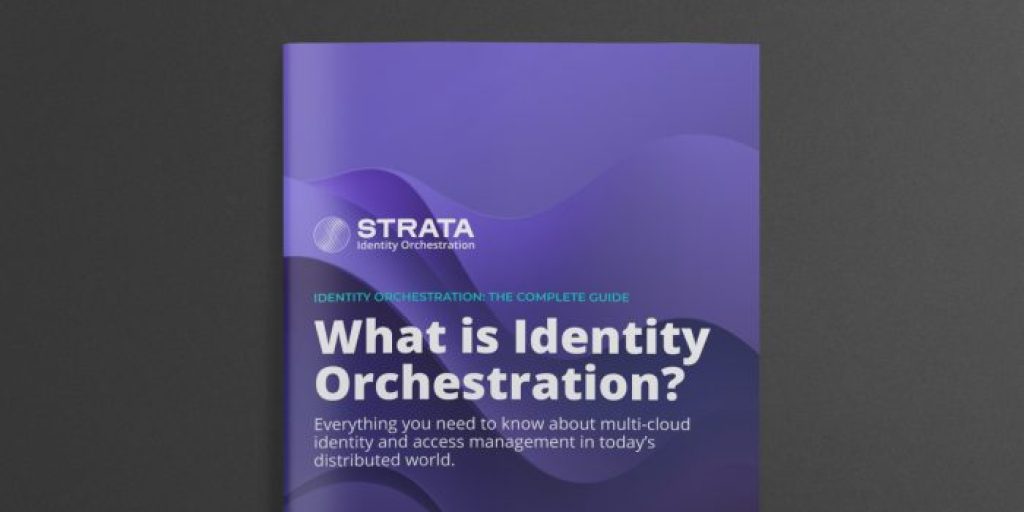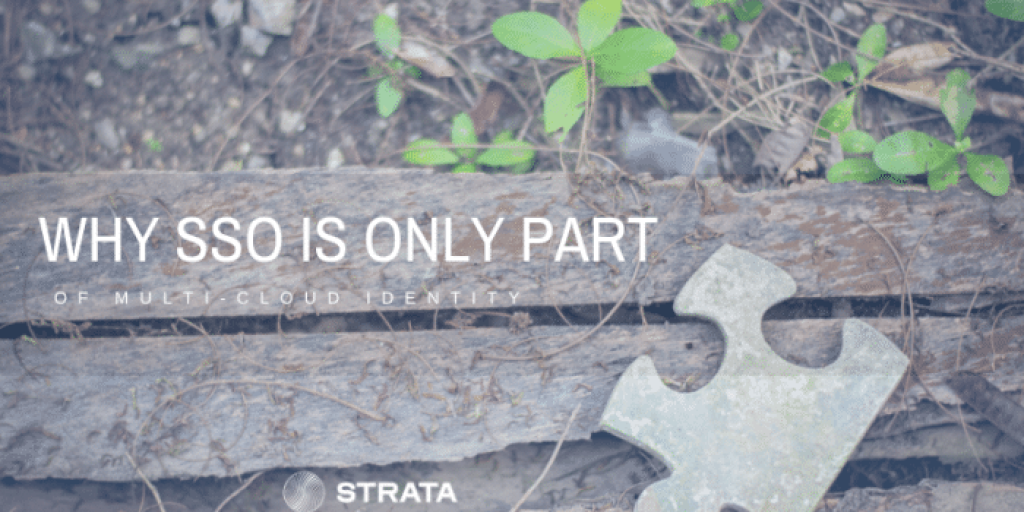What is identity modernization & why should you care?

3 drivers of the identity modernization imperative: people, processes, technology
Identity modernization is the process of moving from managing identities using an on-premises IDP to a cloud-based identity system. It could also be the shift from one cloud to multiple clouds.
The imperative to modernize identity systems comes from the increased need to protect vulnerable identities. Now that there is no firewall, identity is the new perimeter.
The transition is not just about technology, though. For true modernization, we need to think differently about identity. We need to design architectures and build the functionality to account for different patterns with people and processes too. How can this be done at the speed and scale needed?
Find out how to get started with identity modernization
How multi-cloud affects your identities
How did we get to where we are today with identity management? Identity management products have been around for over two decades. These products were good, and they did what they needed to do: create users, manage accounts, provision people to applications, and enable authentication and single-sign-on (SSO). Everything worked really well when all the identity providers, data stores, and applications were behind the firewall.
With the shift to the cloud and the rapid adoption of SaaS applications, things got complicated for identity management. Legacy, on-premises identity products didn’t mature to keep up with the needs of cloud platforms or SaaS products, and new cloud identity systems were not built to meet the complex requirements of legacy on-prem apps.
Companies big and small felt held back by not having a modern identity system. Newer, cloud-based companies were more agile, slicker, and secure (a twist from not so long ago thinking that on-premises was the gold standard of security). When the boundary of the enterprise changed, it wasn’t easy to control the way identities were managed.
Learn to manage your identities
Zero trust only works when all apps have modern authentication
Zero trust is a big reason companies are making modernization a priority. The zero trust security model is critical for cloud security but doesn’t translate to legacy systems.
Enterprises must adapt to this new world where their workforce requires access to applications and data when users are from outside of the enterprise. They have to accommodate access to apps, services, and data that are outside of the firewall, running on public clouds, or on SaaS apps.
Remote workforces, enterprise agility, and cost savings all drive this new reality, but none of the benefits can be realized without shifting to a zero trust security model. Modernizing identity is a critical first step to achieving a zero trust security model in a hybrid or multi-cloud environment.
Achieve zero trust faster with Identity Orchestration – learn how!
3 challenges to identity modernization
What challenges and opportunities exist with distributed multi-cloud identity management?
Legacy IDPs
Legacy on-prem identity systems can’t support cloud technologies and are rapidly reaching end-of-life. A typical enterprise can’t just magically transition all of its applications that run the most critical parts of its business overnight. Modernizing these apps takes careful planning and the right distributed identity infrastructure to make sure there aren’t catastrophic disruptions to your business.
Organizations are being forced to accelerate their timeline for migrating off of these legacy systems because they’re losing product support as a result of end-of-life or end of service. Enterprises don’t want to have to renew an old on-prem system that is no longer supported. Yet, teams are stuck because they still need to access the apps on-prem.
App ownership
Which part of the organization owns identity in the cloud? If you have multiple clouds, the enterprise identity and security teams don’t own the cloud infrastructure; the cloud platform does.
The end result is cloud teams are creating and managing their own identity outside of the purview of the identity and security teams tasked with managing identity at the enterprise level.
Getting control of this problem can be a political nightmare. Many enterprises find that gray areas are common. Figuring out who should own which parts of the identity infrastructure and making sure there is appropriate accountability for consistent implementation of policies and controls isn’t clear.
The distributed landscape
The mismatch between the need to have a distributed environment and the reality that you have to manage it all centrally is huge. User and policy management are completely fragmented, and visibility across different platforms is non-existent.
Enterprises, on average, have at least three cloud platforms, each with its own purpose-built identity system. These cloud identity systems assume they work in a standalone manner, supporting only the needs of their platform and largely ignorant of other platforms save for thin layers of interoperability isolated to single-sign-on.
In addition, the identity landscape has seen a proliferation of providers of everything from multi-factor authentication to risk analytics and identity proofing. Choosing which capabilities to use to secure apps on these different platforms without that app becoming locked into those specific technologies is nearly impossible.
There’s been a missing piece in enterprise architectures needed to abstract applications from the identity functionality they need. Identity Orchestration is a new approach that makes many identity systems come together and work as one.
Don’t be held back by the complexity of multi-cloud identity
Best practices for modernizing identity
Now that we have distributed infrastructures, workloads, and data, we need a distributed identity system to help integrate with and manage those things.
Below are our go-to best practices to follow when embarking on your identity modernization journey.
Think incrementally about your migrations
As tempting as it is to try and get migrations done in one fell swoop, big-bang migrations don’t work. Organizations have been trying to do them for years, and the failure rate on them is shockingly high. Instead, incremental migrations have a much higher success rate.
Incremental or “live” migrations allow you to do things like:
- Identify suitable, low-risk apps and user cohorts for simple A/B testing
- Roll back to a recoverable state
Migrate apps with incremental changes – learn how!
Embrace a distributed model
Centralization has been the traditional mindset that existing vendors would like people to believe is the right way. However, you’re not going to replace AWS’s identity system with Microsoft’s identity system — it’s not even possible!
As you modernize your identity, embrace the distributed nature of the platforms that you have and build your identity system around that distributed reality. Operating in multiple clouds is not going to go away. Recognize the fact that you have multiple identity systems, and instead of trying to centralize, make each one of those identity systems work better together.
Scale your distributed your identity model
Decouple apps from identity
Avoid tightly coupling your apps to your new identity system. Avoid getting locked into any one vendor again.
Individual cloud identity systems tend to bring with them their own ecosystems, like multi-factor authentication and deeper authorization. Having those capabilities is great, but if you want to choose another product for MFA and you’re locked into using the MFA from one identity platform, that’s going to be really hard for you.
Instead of really tightly coupling your integration between your identity system and your app, put an abstraction layer between those so that you can choose any of the identity systems that you already have, and you can switch seamlessly between them.
Decouple your apps from your legacy IDP
Easily modernize identity through orchestration
Manual management of identity modernization is still widely used by enterprises. The problem is that humans take a long time and make errors — things most organizations can’t afford. If your business depends on a system that is being updated, there is no room for downtime.
An identity orchestration platform automates the process of identity modernization and app migration. It takes a fraction of the time and removes the likelihood of human error because the identity fabric abstracts the identities from the app without ever needing to touch it. Integrating with identity systems without having to rewrite your apps saves hundreds of thousands (or millions) in coding costs.
Automate your modernization efforts with Strata’s software
A new solution for identity modernization
Implementing an Identity Orchestration platform bridges the gaps between legacy identity systems that didn’t keep pace with cloud innovations and cloud identity systems that weren’t optimized for the more complex requirements of on-prem apps and services.
Identity orchestration provides a missing layer in enterprise identity architectures that make it possible to swap in and out identity services as needed without impacting user experience or requiring expensive application rewrites.
Integrating legacy apps with a new identity system without having to rewrite them is a huge advantage and cost savings. Building a new, distributed identity orchestration layer will be justified just by the cost savings from not rewriting apps.
Your modernization can happen 100 times faster with Strata’s Identity Orchestration technology. To learn more, talk to one of our identity experts to see how Strata can make your identity modernization journey a smooth one.





